Perennials are the colourful summer dressing for the well-structured formality of Sandy Ovenstone’s famous Cape Town garden
Sandy Ovenstone has arguably one of the finest gardens in the Cape, if not the country. Developed around her home, Stellenberg, a classically U-shaped and gabled Cape Dutch homestead, this lavish and multi-faceted garden is visited by horticulturists from all over the world. Its six and a half acres of leafy splendour are the result of a passion that began more than 25 years ago.
“I had no background in gardening,” explains Sandy, who is ably assisted by horticulturist Caroline Magowan in the garden and Doreen Daubermann in the nursery. “I read about and visit gardens and am inspired by other gardeners and I’m still learning.”
One of the reasons for the garden’s ongoing beauty is that the beds are filled with a noteworthy collection of hardy perennials. “In our climate where things grow just about all year round, we never have that truly dormant time that you get in the northern hemisphere,” she says. “That’s why I like to lift all my perennials each year and bag them so I can replenish the soil with compost. I love to see bare earth; I love the new season of growth.”
The lifting and dividing of perennials is an annual task at Stellenberg with work beginning in late April and May and continuing through July. Newly bagged plants are planted out again in August in compost enriched beds, so the garden is ready for the November Open Days by which time the perennials will have formed thick clumps and are flowering in abundance. Timing and renewal, good soil management and careful selection of plant material for regrowth are essential.
“I think that recently there has been much more emphasis on hard landscaping, tiles and wood,” says Sandy, “but fortunately the classical garden look is creeping back in and with it a stronger emphasis on very useful perennials, that given a little love and attention, reward the gardener with rampant lush displays.”
SANDY’S GARDENING TIPS
- Soil preparation is important. “Perennials live for a long time and need nourishment,” she says. “Before planting we dig the bed to about 60cm deep and add compost; we also test the soil regularly.”
- Plant in groups. “It’s tempting to buy one of each type of plant, but I don’t believe you can achieve the same effect, even in a small garden, with only one or two. You need to group them,” she says.
- Plant according to height. “Use tall perennials at the back of your border and plant them in masses so they don’t look spindly. Alchemilla mollis is good in the very front and phlox in the middle.”
- Don’t battle the odds. “Choose plants that grow in your area and your climate. There’s no point in struggling to grow things.”
- Structure is essential. “Hedging is a good way to add structure. Visually hedges hold everything together and look great even without flowers.”
- Perennials are an investment. “Divide them every year; it makes for stronger plants,” she advises. “Perennials tend to grow outwards from the centre so that the strongest plants are on the edges, while fewer flowers might be produced from the middle. Cut or tease off new growth and throw away the centre.”
- The advantage of dividing perennials is “that you can get rid of weak stock, get weeds out of the roots and can redesign your border each year”.
- A computerised watering system is essential. However small your garden, this saves water and prevents under and overwatering of certain areas. “If you have a strict routine of watering on certain days and times only, you’ll be surprised how your plants adapt and survive,” she says.
PHLOMIS RUSSELIANA
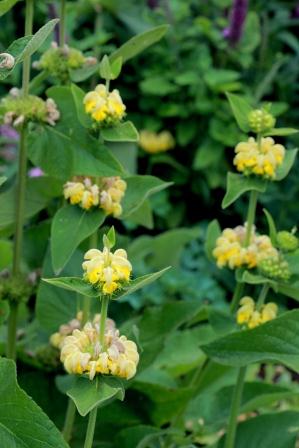
PHLOMIS RUSSELIANA is an evergreen perennial with large, rough, heart-shaped leaves. Stout stems bear circular clusters of hooded yellow flowers at various intervals up their length in summer. An excellent groundcover, it likes sun or partial shade and grows to a height of about 1m.
LYSIMACHIA ATRO PURPUREA ‘BEAUJOLAIS’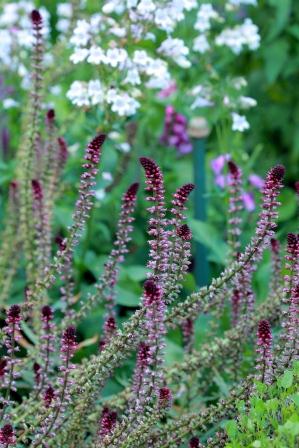
LYSIMACHIA ATRO PURPUREA ‘BEAUJOLAIS’ produces lovely maroon flowers on spires. Quite rare, it flowers in early summer. It’ll grow in full sun or semi-shade and likes moist but not soggy soil. Propagate it in spring by dividing the clumps by hand.
LYCHNIS CORONARIA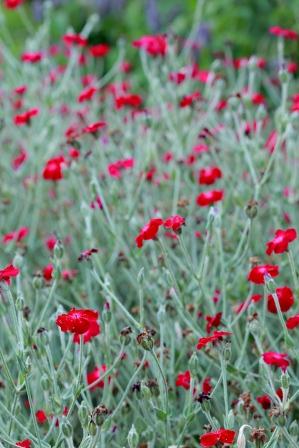
LYCHNIS CORONARIA forms silvery grey clumps with white or cerise flowers appearing in spring and early summer. It grows to 65–70cm high in full sun. To propagate, separate the clumps by hand, or if too tight, use two forks back to back, trimming the roots and leaves before replanting.
LOBELIA ‘TANYA’
LOBELIA ‘TANYA’, a shallow-rooted plant with tall spires of tubular flowers, requires constant moisture. It’s excellent either at the back or in the middle of a border. It’s easy to divide, just pull the clumps apart by hand.
PENSTEMON DIGITALIS ‘ALBA’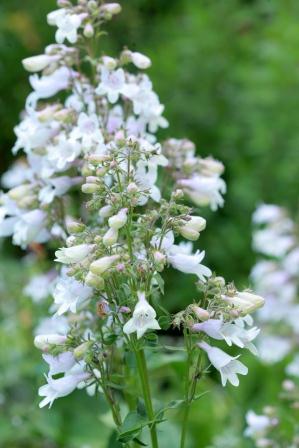
PENSTEMON DIGITALIS ‘ALBA’ is a hardy plant with white flowers flushed with lilac. It prefers fertile soil and full sun, and dislikes wet soil. Growing up to 75cm tall, it flowers in early spring. Once dug up it’s easy to see the new plants and to separate them.
ALCHEMILLA MOLLIS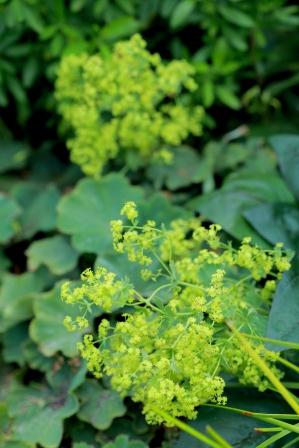
ALCHEMILLA MOLLIS is a pretty groundcover that grows to about 15–20cm high making it ideal for the front of borders. It has soft green, hairy leaves and tiny, yellow, star-shaped flowers which appear from early summer. Propagate in early winter by cutting apart the clumps with secateurs.
PHLOX MACULATA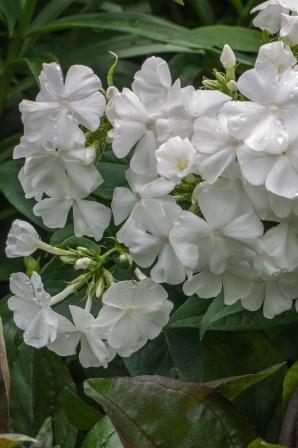
PHLOX MACULATA has tightly packed white flowers and grows to about 65cm high. It enjoys sun to partial shade and soil that’s moist, but well drained. To encourage large flowers, pinch out the outside shoots when half grown. Cut down the flower heads to just above ground level in late summer. In cold months, cut up clumps with a sharp knife to form new plants, or propagate from root cuttings in mid-spring to early summer.

